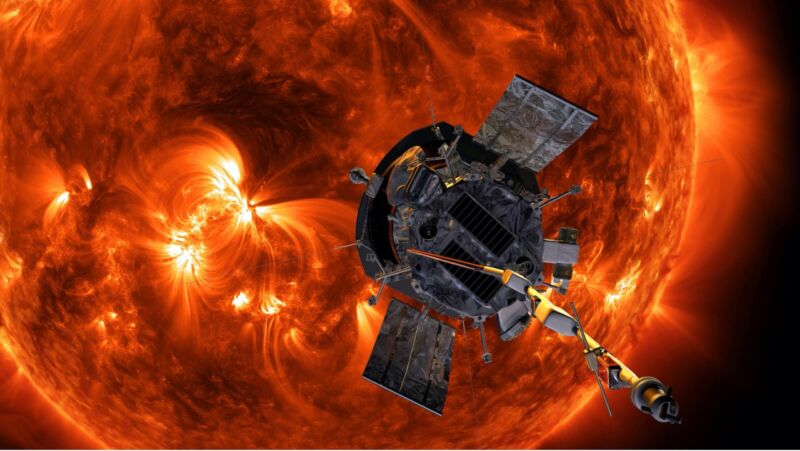
The solar wind teems with charged particles that can light up auroras, glitch satellites and damage Earth’s electrical infrastructure. Despite its importance, we have a limited understanding of the forces that produce the wind, where it comes from the sun, and what accelerates it toward our planet.
Because the solar wind blows out with such force, its immense power has so far made it almost impossible for spacecraft to see through the chaos and determine where it is being generated. NASA’s Parker Solar Probe was able to observe the sun close enough to image the region from which the solar wind originates. NASA scientists had previously predicted that it starts close to the surface and then flows through “holes” in the sun’s corona, the outer atmosphere, before being ejected into space. What Parker beamed back finally proved they were right.
A hole in the corona
“The fast solar wind that fills the heliosphere originates from deep within regions of open magnetic field on the sun called ‘coronal holes,'” said researchers on the Parker team in a study recently published in Nature..
So what are “coronal holes”? These particularly bright regions in the corona are open regions in the Sun’s magnetic field. Multiple magnetic field lines extending all the way to the sun’s surface pass through each hole, some toward the sun, others away from it. When magnetic fields that go in opposite directions collide, they break and reconnect in a phenomenon known as magnetic reconnection, spewing out plasma that flows along the field lines.
This is where Parker’s discovery comes into play. Parker was able to detect streams of the same high-energy particles in the plasma flowing out of coronal holes. These particles are also found in what is known as the fast solar wind, which is almost twice as fast as the slow solar wind, reaching speeds of about 800 km per second (almost 500 mph). Parker’s extraordinary vision could also track the rise of the solar wind from a distance of about 13 million km (8 million miles). At that distance, the solar wind hasn’t quite turned into a chaotic monster yet, so the probe was able to observe its much more textured beginning closer to the surface. The fast solar wind particles it caught were so energetic that they were also found to accelerate electromagnetic waves known as Alfvén waves, which push the particles even further.
What drives the solar wind was debated for decades, as there was controversy over whether it was driven by magnetic reconnection or by Alfvén waves. But until Parker’s advanced instruments could detect what was happening deeper in the sun, there was no way to settle the argument.
Find connection
The Parker team created reconnection simulations that matched the probe’s observations. “Reconnection directly heats the surrounding coronal plasma enough to stimulate the bulk outflow and at the same time produces the turbulent bursts of velocity that ride this outflow,” the researchers said in their study.
While Parker previously tried to determine the origin of the solar wind, it was in the wrong position, targeting an area on the far side of the sun that was too far away to see what was going on in these “coronal holes.” There was also a chance it wouldn’t capture much activity because it launched in 2018 during a solar minimum (the period of least action). Solar maxima (the period of most action) occurs every 11 years; the next solar maximum will be in 2025, but we haven’t had to wait for the maximum to catch some coronal holes.
Understanding where the solar wind comes from should help us predict when it will be heading our way and how soon it will reach our planet. If we know to plan ahead, we may be able to protect satellites, power grids and other sensitive equipment. This is especially important as we approach solar maximum when superfast solar wind gusts are most likely to hit Earth.
Parker will be able to get even closer to the sun in the near future. Its instruments can carry the heat as far as 4 million miles (6.4 million km), twice as close as this time. For now, it continues to stare at the sun.
Nature, 2023. DOI: 10.1038/s41586-023-05955-3 (About DOIs).
Elizabeth Rayne is a creature that writes. Her work has appeared on SYFY WIRE, Space.com, Live Science, Grunge, Den of Geek, and Forbidden Futures. When she’s not writing, she’s transforming, drawing, or cosplaying as a character she’s never heard of before. Follow her on Twitter @quothravenrayne.

